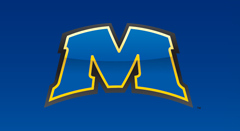
Title
Comparison of methionine hydroxy analogue chelated versus sulfate forms of copper, zinc, and manganese on growth performance and pregnancy rates in yearling beef replacement heifers
Document Type
Article
Publication Date
2-2014
Abstract
Our objectives were to compare growth performance and pregnancy rates of heifers supplemented with Cu, Zn, and Mn as either methionine hydroxy analog chelate (provided as MINTREX) or in the SO4 form. The experiment used 3 ranches, each having 2 replicate pens per treatment. Performance data were analyzed by ANOVA as a randomized complete block design using pen as the experimental unit. Pregnancy diagnosis data were analyzed using Chi-squared analysis. Heifers (n = 2,480) were fed diets for 181 d (ranch A), 149 d (ranch B), and 151 d (ranch C) before breeding. Heifers were weighed (shrunk) at trial initiation, end of feeding, breeding, and at pregnancy diagnosis. Ranch A heifers were bred by AI followed by natural service (45-d breeding), ranch B heifers were bred by natural service (50-d breeding), and ranch C heifers were bred by AI once at estrus detection only. No ranch × treatment interactions were detected for any measurements, and no differences were detected between treatments for gain, ADG, and G:F. Ranch effects were significant for gain, ADG, G:F, and overall pregnancy rate but not for conception in the first 21 d of breeding. Pregnancies conceived during the first 21 d of breeding did not differ between treatments. Overall pregnancy rate was increased by 2% for heifers supplemented with methionine hydroxy analog chelate versus SO4 form. Under the conditions of this experiment, methionine hydroxy analog chelate contributed to increased pregnancy rates compared with a readily available inorganic form of trace mineral.
Recommended Citation
Professional Animal Scientist, Vol. 30 (2014), No. 1, 62-67.
